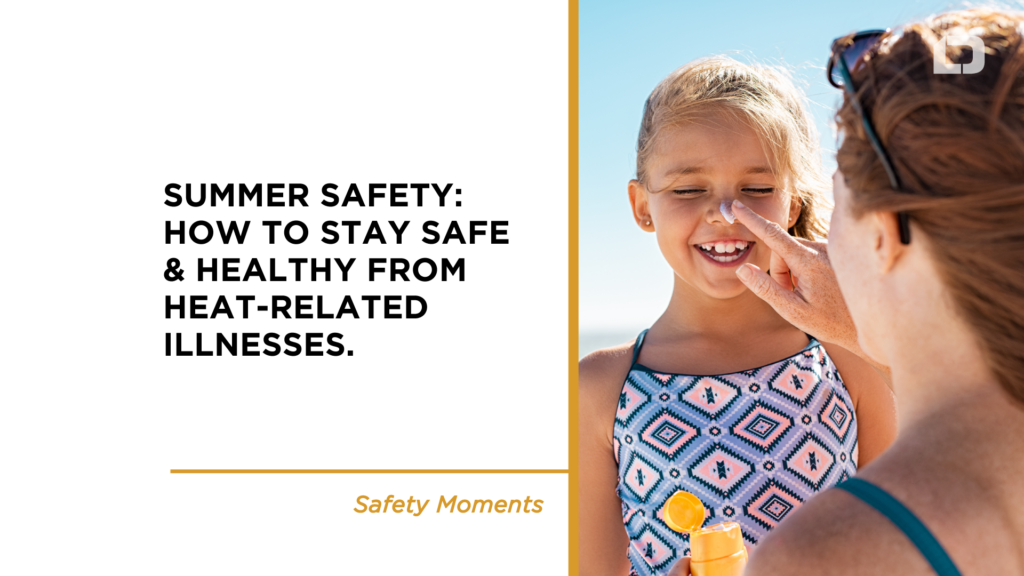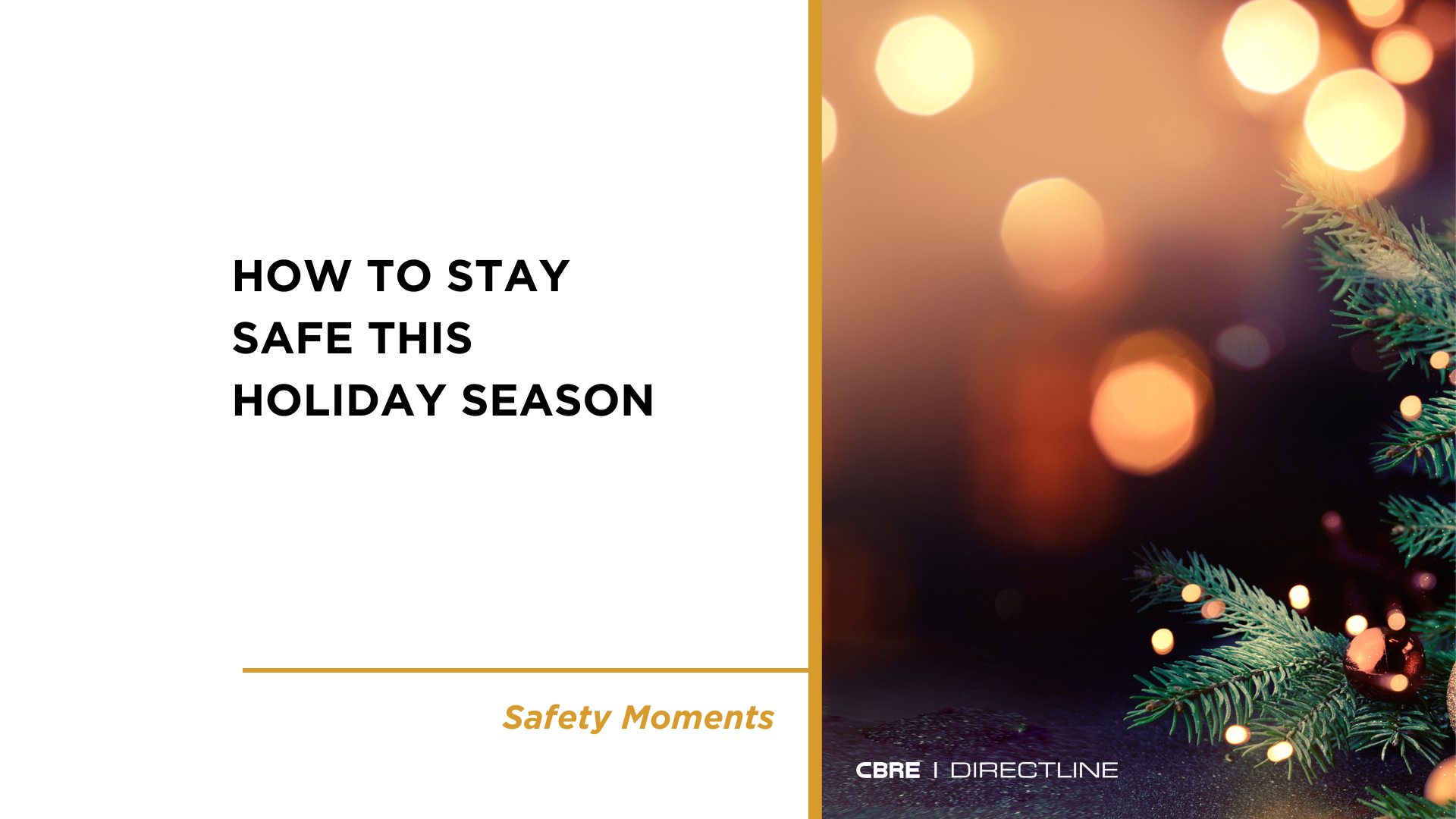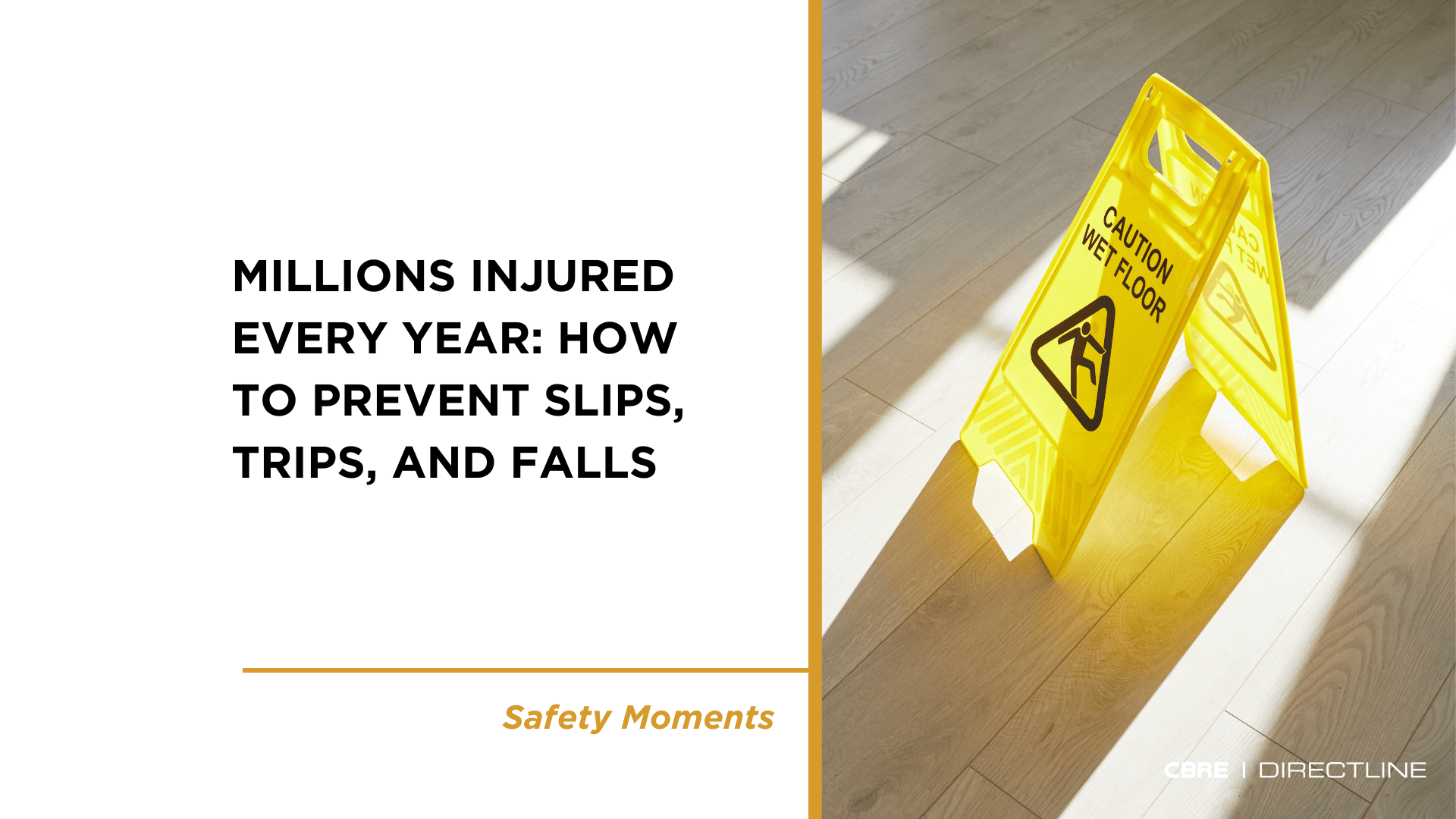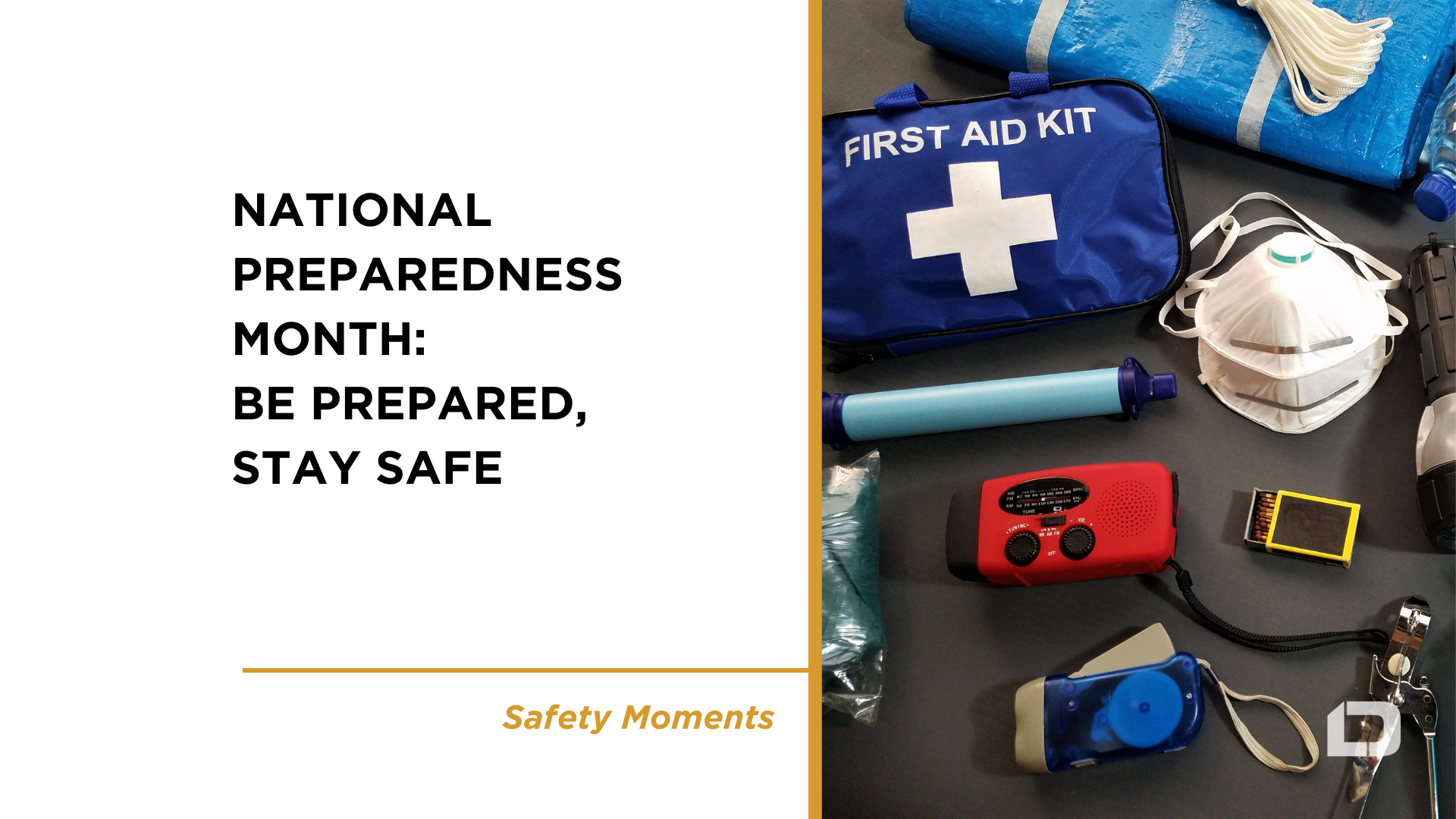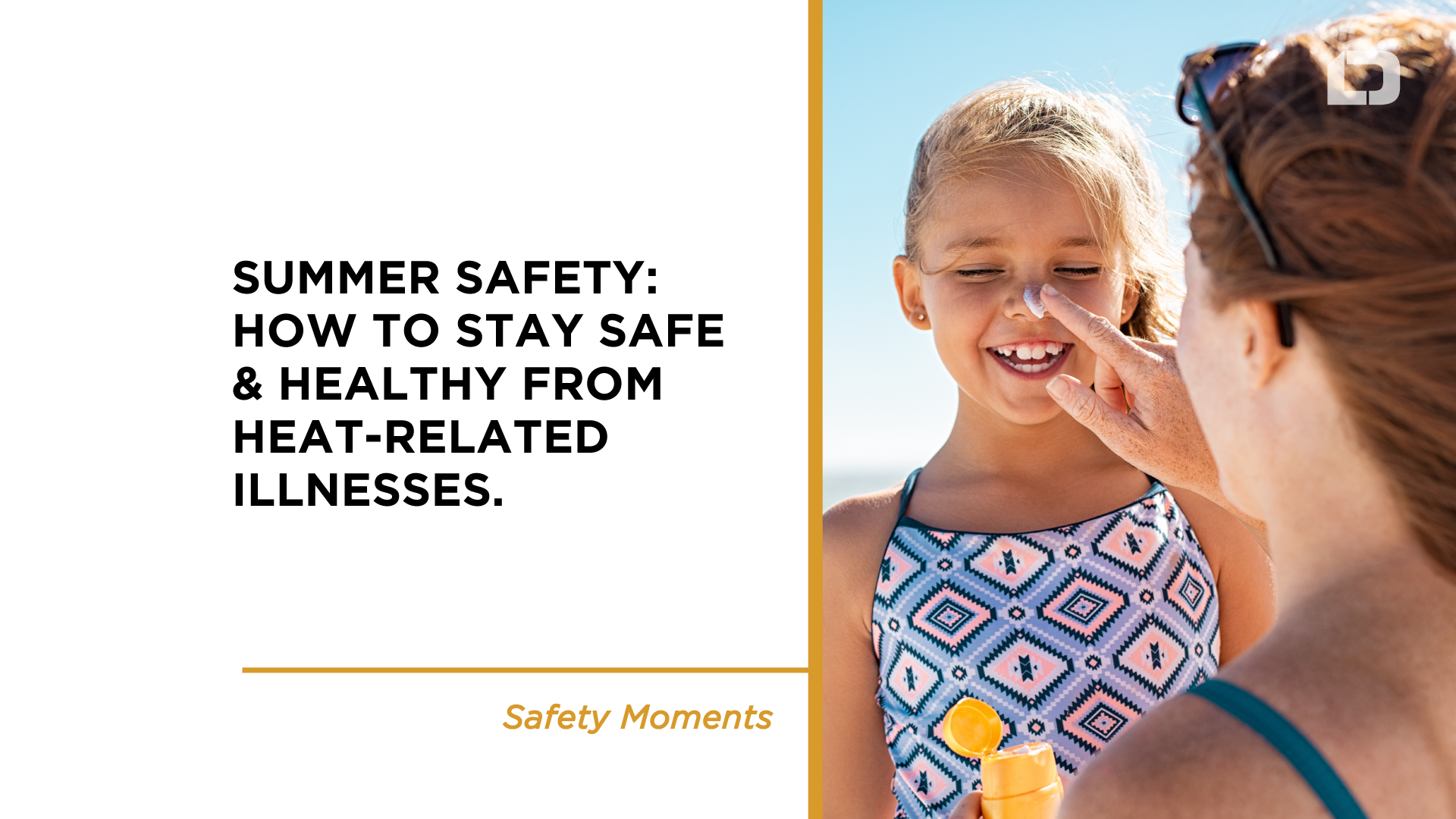Summer is here, and there are many ways for you and your family to enjoy yourselves and still stay safe and healthy. There are many topics to consider, including heat-related illness, protecting yourself from Ultraviolet (UV) light, water safety, boating safety, and biking safety.
Heat-related Illnesses
The human body is normally able to regulate its temperature through sweating until it is exposed to more heat than it can handle. Heat exhaustion and heat stroke can escalate rapidly, leading to delirium, organ damage, and even death. According to Injury Facts, in 2021, the National Oceanic and Atmospheric Administration reported 201 people died and 67 were injured in the U.S. from weather-related excessive heat.
People most at risk include:
- Those who work in the heat
- Infants and young children, especially if left in hot cars
- People 65 and older
- People who are ill, have chronic health conditions, or are on certain medications
- People who are overweight
Knowing the symptoms and proper response to these illnesses can save a life.
Heat Exhaustion
When the body loses excess water and salt, usually due to sweating, heat exhaustion can occur. Signs and symptoms include:
- Pale, ashen, or moist skin
- Muscle cramps (especially for those working or exercising outdoors in high temperatures)
- Fatigue, weakness, or exhaustion
- Headache, dizziness, or fainting
- Nausea or vomiting
- Rapid heart rate
Uncontrolled heat exhaustion can evolve into heat stroke, so make sure to treat victims quickly:
- Move victims to a shaded or air-conditioned area
- Give water or other cool, nonalcoholic beverages
- Apply wet towels, or have victims take a cool shower
Heat Stroke
Seek medical help immediately if someone is suffering from heat stroke. Signs include:
- Body temperature above 103 degrees
- Skin that is flushed, dry, and hot to the touch; sweating has usually stopped
- Rapid breathing
- Headache, dizziness, confusion, or other signs of altered mental status
- Irrational or belligerent behavior
- Convulsions or unresponsiveness
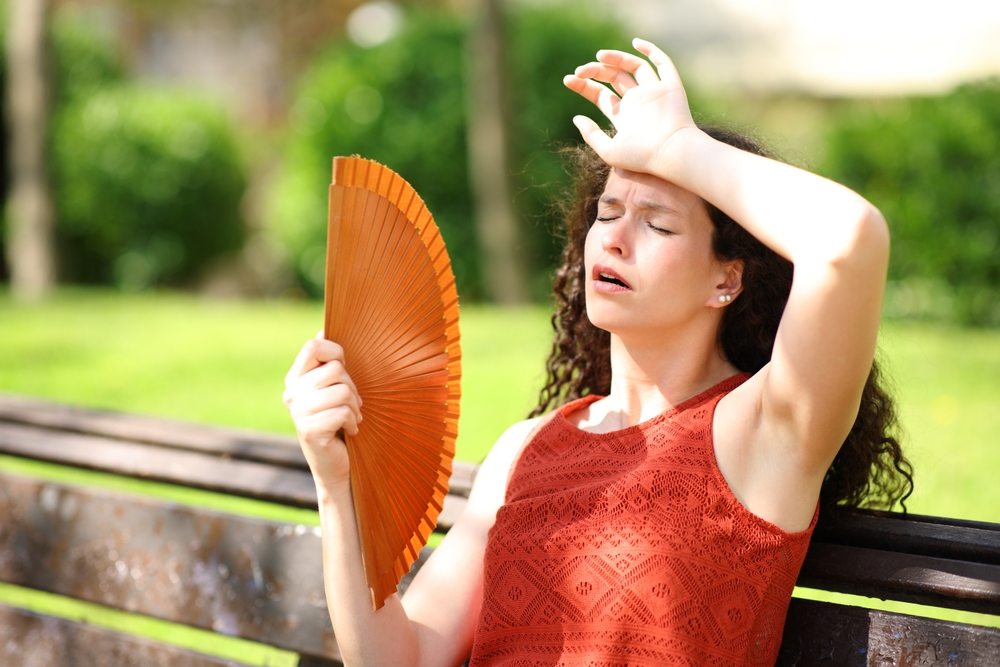
Immediately take action
- Call 911
- Move the victim to a cool place
- Remove unnecessary clothing
- Immediately cool the victim, preferably by immersing up to the neck in cold water (with the help of a second rescuer)
- If immersion in cold water is not possible, place the victim in a cold shower or move to a cool area and cover as much of the body as possible with cold, wet towels
- Keep cooling until the body temperature drops to 101 degrees
- Monitor the victim’s breathing and be ready to give CPR if needed
DO NOT
- Force the victim to drink liquids
- Apply rubbing alcohol to the skin
- Allow victims to take pain relievers or salt tablets
The best way to avoid a heat-related illness is to limit exposure outdoors during hot days. According to the Centers for Disease Control and Prevention:
- Air conditioning is the best way to cool off
- Drink fluids, even if you don’t feel thirsty, and avoid alcohol
- Wear loose, lightweight clothing and a hat
- Replace salt lost from sweating by drinking fruit juice or sports drinks
- Avoid spending time outdoors during the hottest part of the day, from 11 a.m. to 3 p.m.
- Wear sunscreen; sunburn affects the body’s ability to cool itself
- Pace yourself when you run or otherwise exert your body
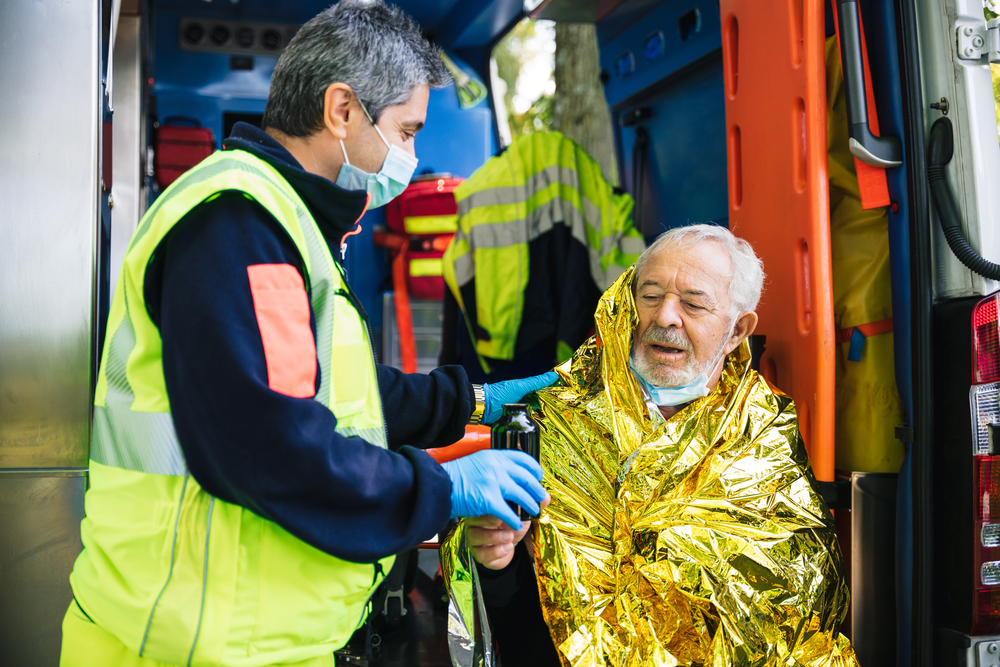
Keep Each Other Safe
In your community, please check in on neighbors who are elderly, housebound, or otherwise may be reluctant to ask for help. You can offer to host them in the air-conditioned comfort of your living room on hot days, drive them to a local cooling center, or call relatives or city services to arrange for them to stay cool.
Sun Safety and Ultraviolet (UV) light
Spending time outside is a great way to be physically active, reduce stress, and get vitamin D. You can work and play outside without raising your skin cancer risk by protecting your skin from the sun.
Most skin cancers are caused by too much exposure to ultraviolet (UV) light. UV rays are an invisible kind of radiation that comes from the sun, tanning beds, and sunlamps. UV rays can damage skin cells.
Protection from UV rays is important all year, not just during the summer. UV rays can reach you on cloudy and cool days, and they reflect off surfaces like water, cement, sand, and snow. In the continental United States, UV rays tend to be strongest from 10 a.m. to 4 p.m. daylight saving time (9 a.m. to 3 p.m. standard time).
The UV Index forecasts the strength of UV rays each day. If the UV index is 3 or higher in your area, protect your skin from too much exposure to the sun.
How to Protect Your Skin from the Sun
Shade
You can reduce your risk of sun damage and skin cancer by staying in the shade under an umbrella, tree, or other shelter. Your best bet to protect your skin is to use sunscreen or wear protective clothing when you’re outside—even when you’re in the shade.
Clothing
When possible, wear long-sleeved shirts and long pants and skirts, which can provide protection from UV rays. If wearing this type of clothing isn’t practical, try to wear a T-shirt or a beach cover-up. Clothes made from tightly woven fabric offer the best protection. A wet T-shirt offers much less UV protection than a dry one, and darker colors may offer more protection than lighter colors. Some clothing is certified under international standards as offering UV protection.
Hat
For the most protection, wear a hat that has a brim all the way around that shades your face, ears, and the back of your neck. A tightly woven fabric, such as canvas, works best to protect your skin from UV rays. Avoid straw hats with holes that let sunlight through. A darker hat may offer more UV protection.
If you wear a baseball cap, you should also protect your ears and the back of your neck by wearing clothing that covers those areas, using sunscreen, or staying in the shade.
Sunglasses
Sunglasses protect your eyes from UV rays and reduce the risk of cataracts. They also protect the tender skin around your eyes from sun exposure.
Sunglasses that block both UVA and UVB rays offer the best protection. Most sunglasses sold in the United States, regardless of cost, meet this standard. Wrap-around sunglasses work best because they block UV rays from sneaking in from the side.
Sunscreen
Put on broad-spectrum sunscreen that filters out both UVA and UVB rays and has an SPF of 15 or higher before you go outside. Don’t forget to put a thick layer on all exposed skin. Get help for hard-to-reach places like your back. And remember, sunscreen works best when combined with other options.
Sunscreen is not recommended for babies who are 6 months old or younger. The U.S. Food and Drug Administration recommends keeping infants out of the sun during midday and using protective clothing if they must be in the sun.
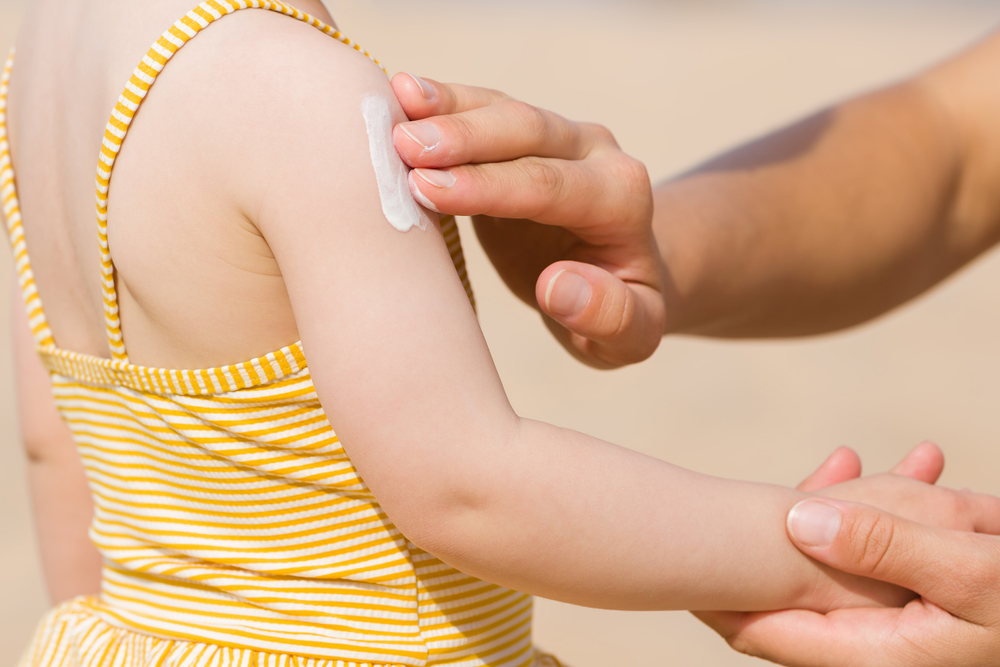
SPF. Sunscreens are assigned a sun protection factor (SPF), which is a number that rates how well they filter out UV rays. Higher numbers indicate more protection. You should use a broad-spectrum sunscreen with an SPF of 15 or higher.
Reapplication. Sunscreen wears off. Put it on again if you stay out in the sun for more than 2 hours and after swimming, sweating, or toweling off.
Expiration date. Check the sunscreen’s expiration date. Sunscreen without an expiration date has a shelf life of no more than 3 years. Its shelf life is shorter if it has been exposed to high temperatures.
YOUR SAFETY & HEALTH MATTER, BOTH ON AND OFF THE JOB. YOU ARE AN IMPORTANT PART OF DIRECT LINE.

